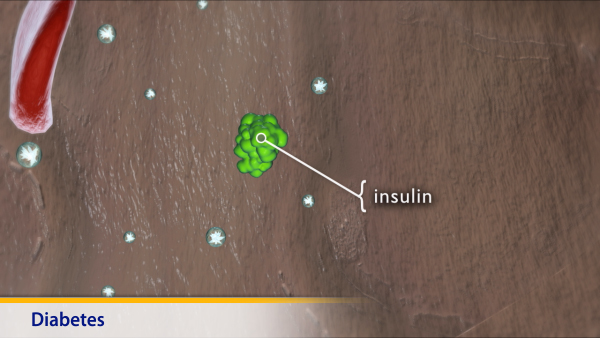
Blood Glucose Test
What is the blood glucose test?
This test measures the amount of glucose (sugar) in the blood. Sugar is an important source of energy, especially for the brain. The amount of glucose in the blood is carefully controlled by the endocrine (glandular) system. This system causes sugar to be stored or used for energy, depending on the needs of your body.
You can get glucose directly from some foods, such as table sugar. The body can also produce glucose when other foods, such as bread and cereal, are digested.
Why is this test done?
The most common use of the blood glucose test is to check for diabetes mellitus.
How do I prepare my child for this test?
The simplest way to check for diabetes is to check blood sugar (glucose) before your child has anything to eat or drink in the morning. In most cases, your child will fast overnight, eating nothing and drinking nothing but water after an evening meal, and in the morning before his or her blood is drawn.
Your child may need to avoid taking certain medicines before the test because they might affect the test result. Make sure your healthcare provider knows about any medicines, herbs, or supplements that your child is taking. Don't stop any of your child's regular medicines without first consulting with your healthcare provider.
Talk to your child's healthcare provider if you have any questions.
How is the test done?
Your child's healthcare provider will poke a finger with a lancet and fill a small tube with the blood. Sometimes blood is taken from your child's arm through a needle. Having this test will take just a few minutes.
How will I get the test result?
Ask your healthcare provider how you will get the result of your child's test.
What does the test result mean?
The normal fasting blood glucose range for children in most labs is 70 to 99 milligrams per deciliter (3.9 to 5.5 millimoles per liter). The normal range may vary slightly from lab to lab. Normal ranges are usually shown next to the results in the lab report.
A fasting blood sugar level of 100 to 125 mg/dL (5.5 to 6.9 mmol/L) is called impaired fasting glucose or prediabetes. A level of 126 mg/dL (7.0 mmol/L) or higher can mean your child has diabetes.
Blood glucose level may be higher than normal (called hyperglycemia) if:
- Your child has prediabetes, a condition that can become diabetes.
- Your child has diabetes.
- Your child was previously diagnosed with diabetes and:
- has not been taking insulin or diabetes medicines, or diabetes medicines are not adequately controlling the condition
- your child hasn't been following a diabetic diet.
- Your child has kidney or liver disease.
- Your child's pancreas is inflamed.
- Your child's body is severely stressed from a bad infection or injury.
Your child's blood glucose level may be lower than normal (called hypoglycemia) if:
- Your child is diabetic and:
- the dose of insulin or other medicine used to control the diabetes is too high
- your child took medicine for diabetes but then did not eat.
- Your child's thyroid, pituitary, or adrenal glands are not working normally.
- Your child has liver disease.
- Your child has problems absorbing food.
- Your child is not getting the nutrients needed from his or her diet.
What if my child's test result is not normal?
Test results are only one part of a larger picture that takes into account your child's medical history and current health. Sometimes a test needs to be repeated to check the first result. Talk to your healthcare provider about the result and ask questions.

